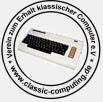Greetings,
A few days ago I started to desolder the P3's CPU board (CAAA08 - CA1102/8HP00067). The desoldering hand pump broke soon afterwards and this Monday received a replacement (which broke after 1h of use, but that's another story ![]() ). Approximately 2/3 of the board has been exposed and the silk screens containing the components is visible in the unearthened region.
). Approximately 2/3 of the board has been exposed and the silk screens containing the components is visible in the unearthened region.
Both resistors and capacitors use the standard references (Rn, Cn; n being a number).
Resistor arrays use "N24/x" (x being a number).
Crystals use "QUn" (n being a number).
Integrated circuits, on the other hand, have a unique reference consisting of a single number and are also labelled with (what I think it is) their TA's part catalog identifier:
| Silk Screen Reference | Integrated Circuit Reference |
| A101 | 74LS00 |
| A102 | 74LS02 |
| A103 | 74LS04 |
| A104 | 74LS10 |
| A114 | 74LS38 |
| A129 | 74LS27 |
| A164 | 74LS11 |
| A403 | 74S04 |
| H112 | 74LS138 |
| H126 | 14LS156 |
| L64 | 2114 |
| P109 | 74LS175 |
| P111 | 74LS393 |
| Y13 | 8085 |
| Y22 | 8251 |
EPROMs in this board don't seem to have a catalog reference.
I hope to be able to complete this list soon, and to start real work with the board - so we can get a proper schematic to repair it and also to identify parts of the bank-switching mechanism.
Regards,
Jaume

